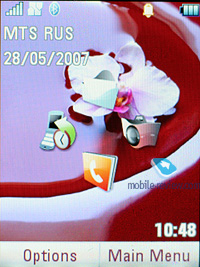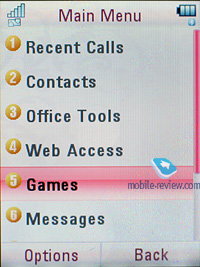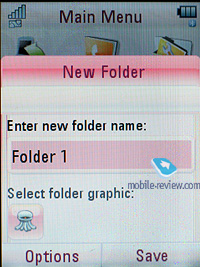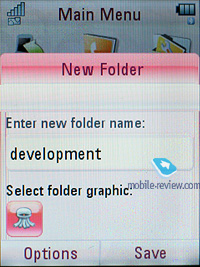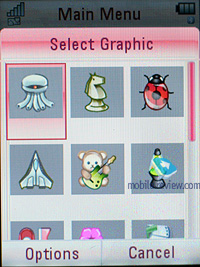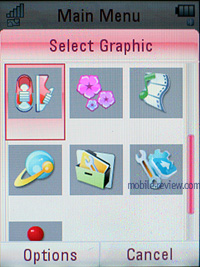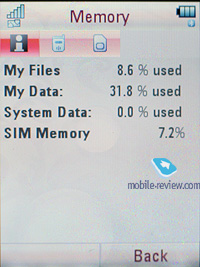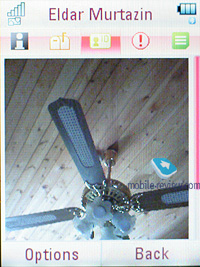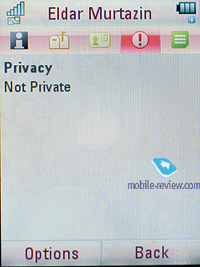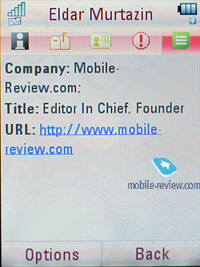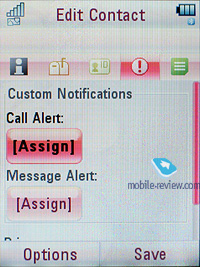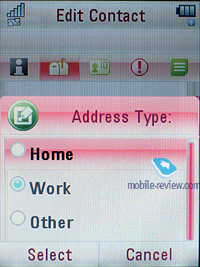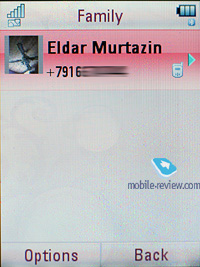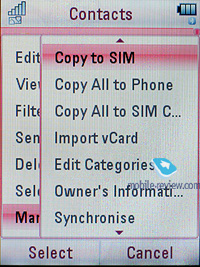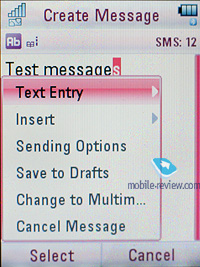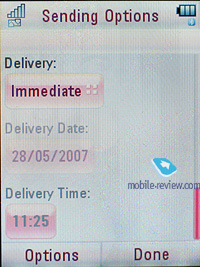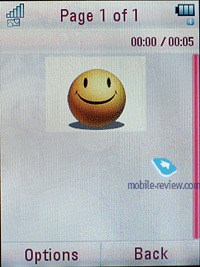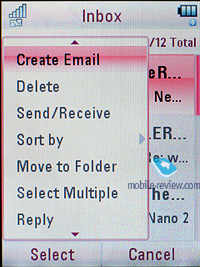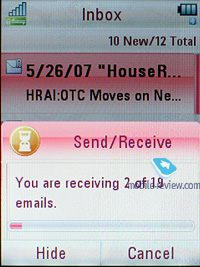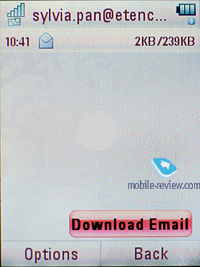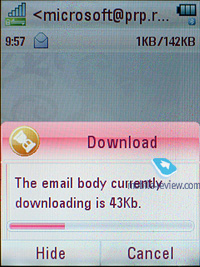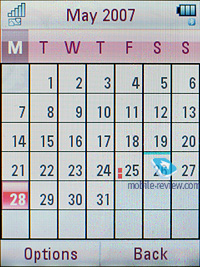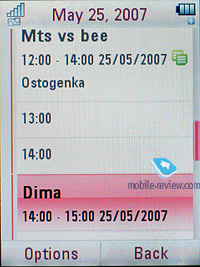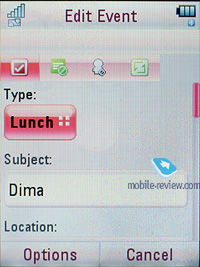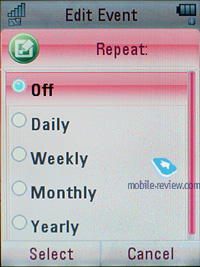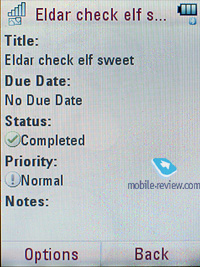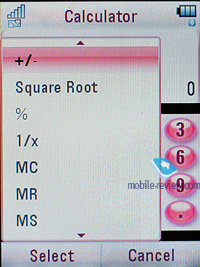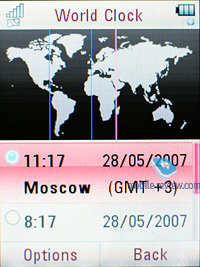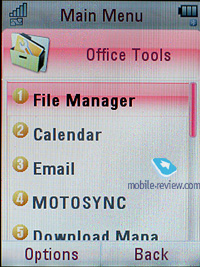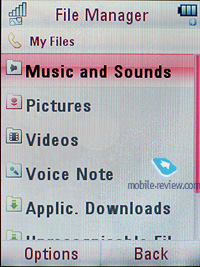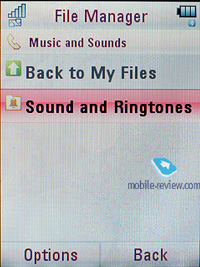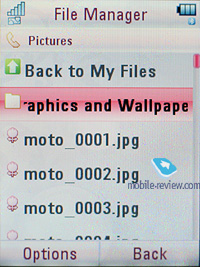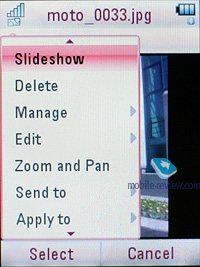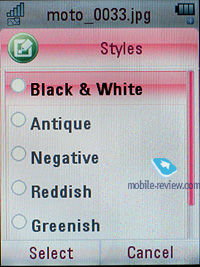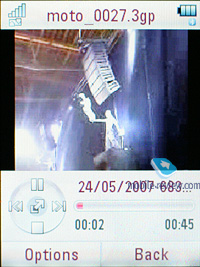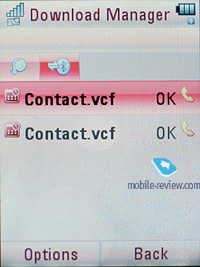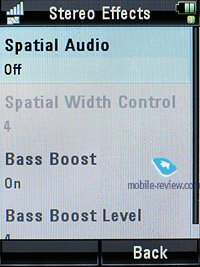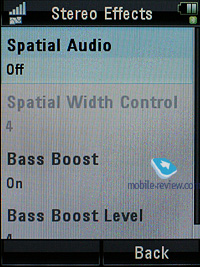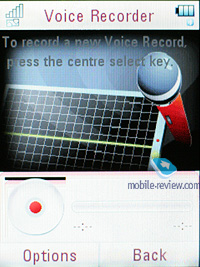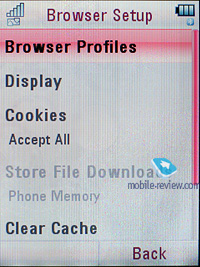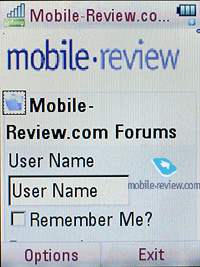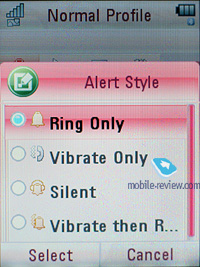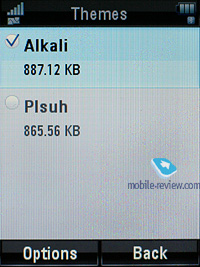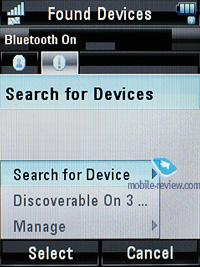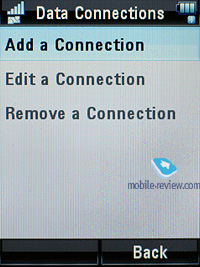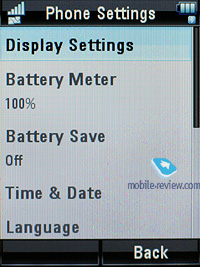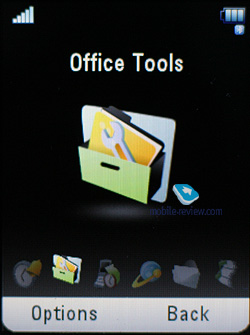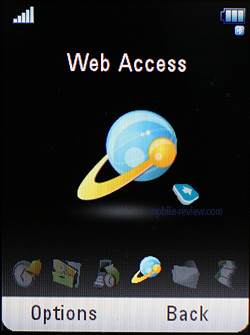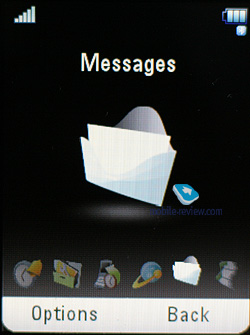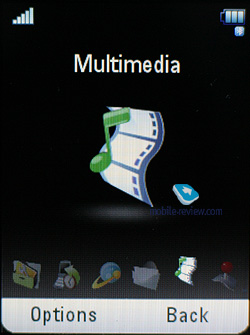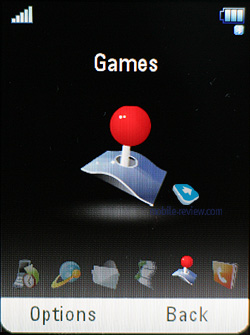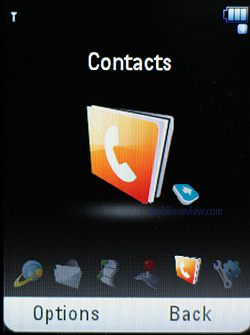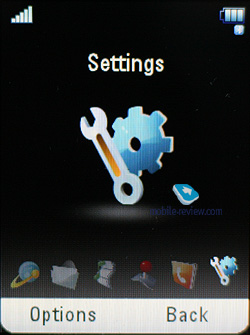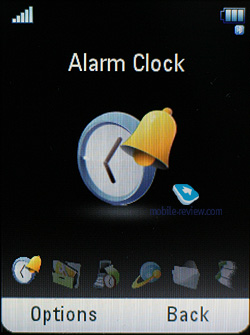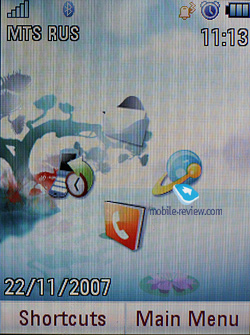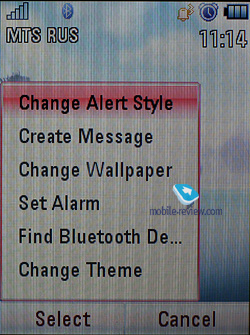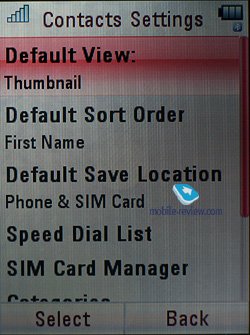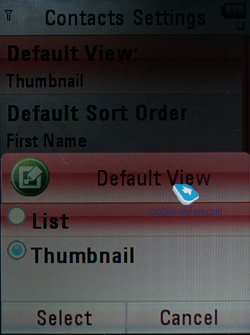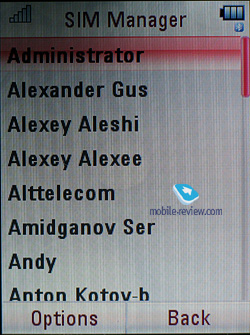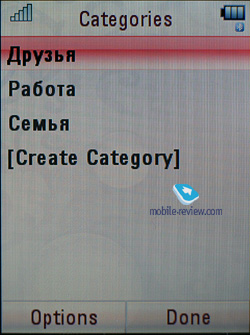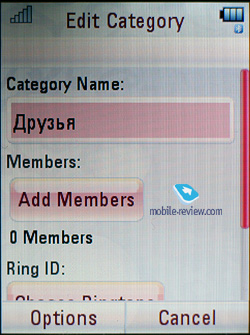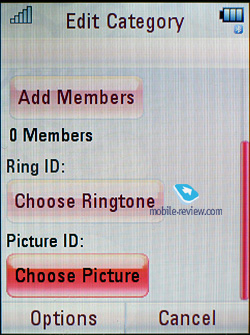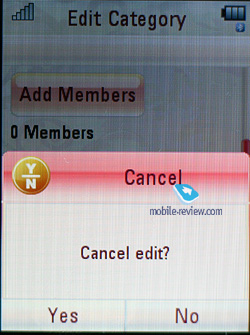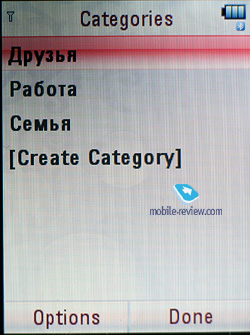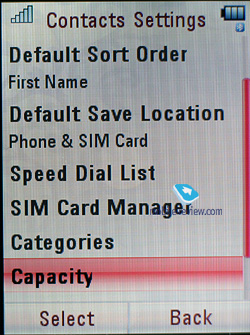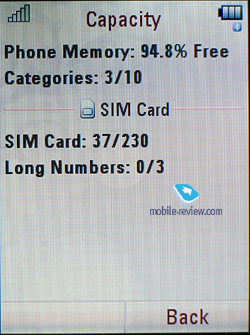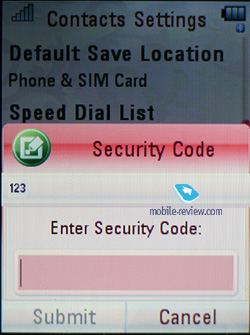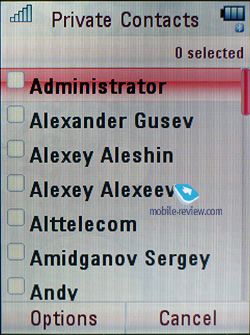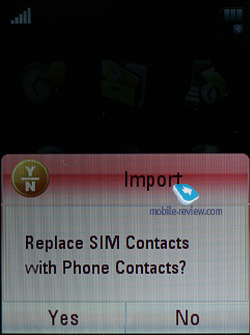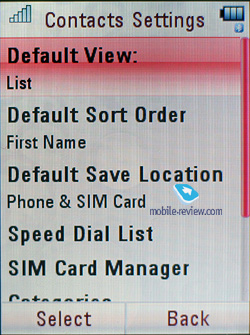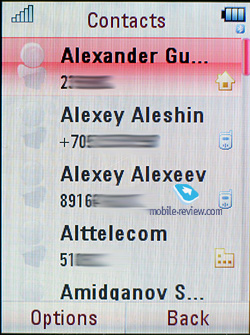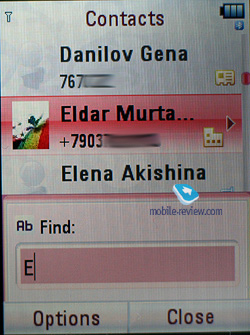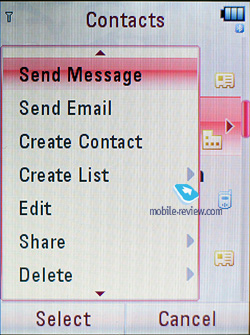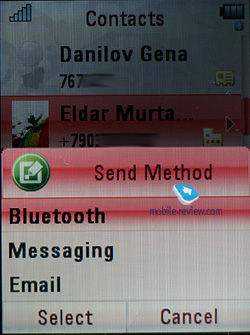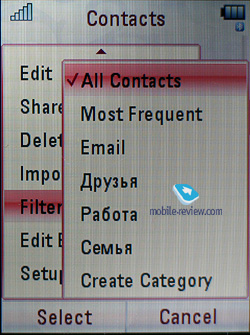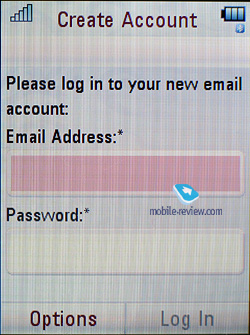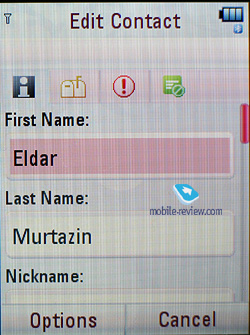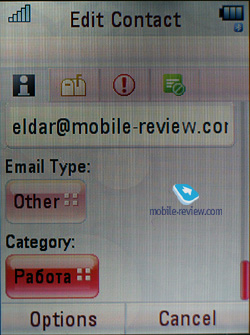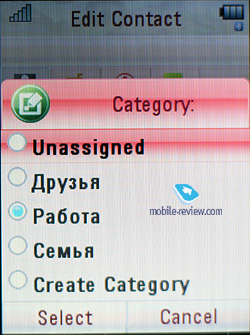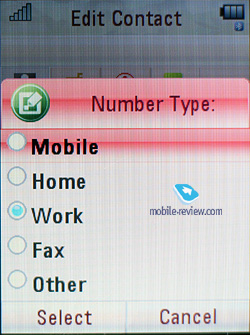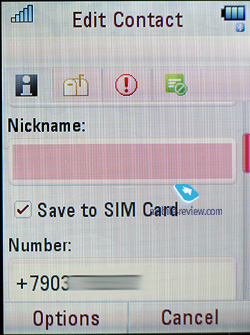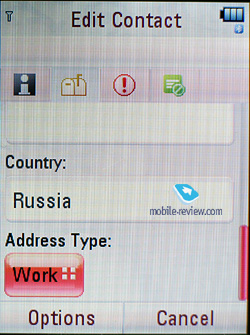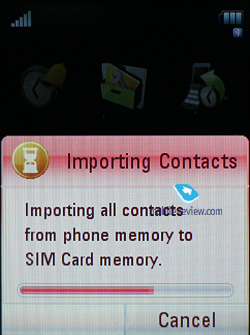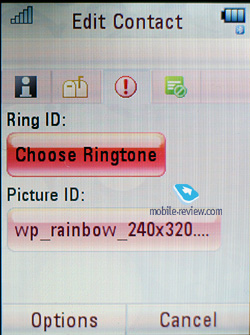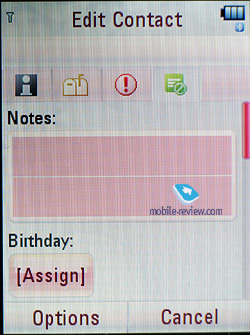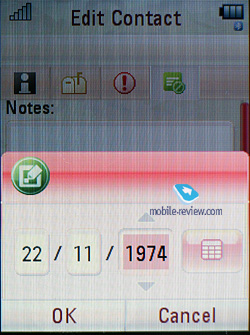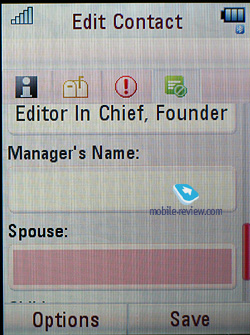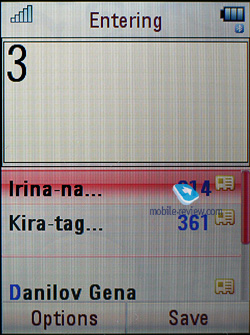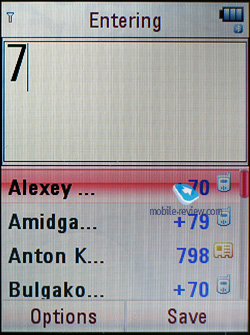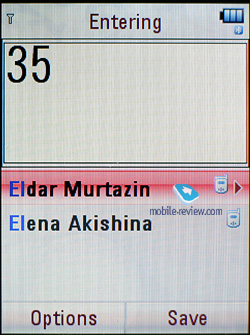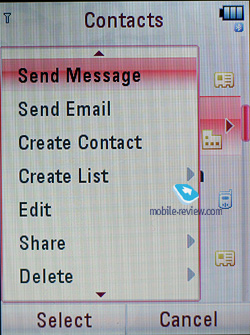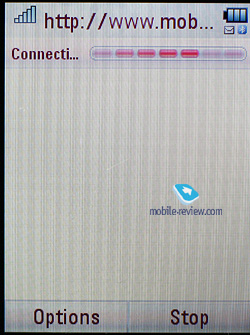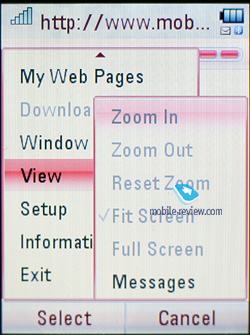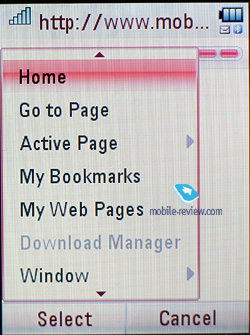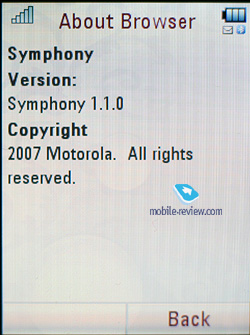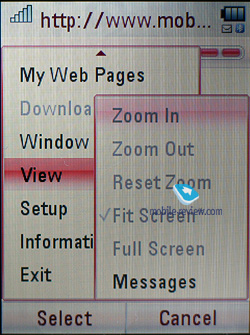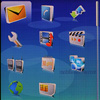|
|
Software features of the MOTOMAGX (LJ)
These days the LJ platform (Linux+Java), also known as the MOTOMAGX, is getting to the foreground in Motorola’s portfolio of handsets. There are several versions of the LJ out there (the company's indexing for them is: L6.1, L6.3, L7.1 and so on), however in fact they always pack much more than what we experience with Motorola’s offerings. Since they have sped up the development cycle of the platform, implementation of new abilities into the phones takes some time, which is the foremost difference from what most other manufacturers do, as they embed brand-new features into the next successive handset generations.
This article focuses on the platform’s user interface, as well as the standard suite of applications and features of the L6.1, whereas the L6.3 version comes onboard of the Motorola RAZR2 V8, the Motorola U9, and a number of other solutions slated to go on sale early in 2008.
Table of contents:
- User interface
- Voice functions
- Text input, personal dictionary
- Multitasking
- Phonebook
- Messaging
- Office tools
- Music player
- Voice Recorder
- Browser
- Settings
- Call logs and other calling features
- Java
- Version L6.3
- Conclusion
User interface
The left soft-key is bound to the Options item, which is in fact a sort of fast start menu, specifically the list features key lock, camera application, message creation, profile change, offline mode, alarm clock and finally, standby screen setup (digital or analogue clock and shortcuts management) options.
Navigating through the handset’s menu is as simple as it could be – to enter any menu, press the joystick, to go one level back use the “C” key (with an arrow etched on it).
The main menu can be viewed either as a grid or a list. Shortcut number navigation is enabled in the MOTOMAGX. On the plus side, the device keeps in memory which menu item you called up last, thus when entering the main menu, it automatically highlights it. In the sub-menus, however, the item highlighted is the one on the list’s top – apart from Motorola, today, only Samsung has come up with implementation of this feature, but in the latter, case sub-menus have this option enabled as well.
For all items found in the main and sub- menus, you can modify their order of appearance; your own applications can be tossed within different folders. The user is also at liberty to create their own folders in the main menu and assign icons and names to them. This option is just great and simply a winner thanks to plain and uncomplicated implementation.
The negative things about any local version of the platform, though, include captions to the menu items – being too long, they don’t fit on the screen, so that once you highlight any item scrolling steps into action, but the impressions aren’t particularly favorable. For example, at a glimpse you see Web Ac…, Office T…, Muktime.., File Ma… and so on. Why they couldn’t think of shorter captions – I do not know. That strange “Web Ac..” would be better off with “Web” caption. Other items could use some name-changing as well, and it wouldn’t be that hard at all.
Back to the table of contents >>>
Voice functions
The LJ platform comes included with speaker-independent voice recognition system. It does not require prior voice training; the handset identifies the majority of commands without any problems. Particularly, it is possible to dial the number from the phonebook, it is enough to say the first name and the last name, and then specify number type – office, home, fax, etc. The list of the commands is quite lengthy: from voice dialing to activation of some menus or checking battery status and signal strength (check battery, check status). The function is quite fetching, and sometimes comes in handy, especially when using the headset. Pressing the headset button in the standby mode is similar to the voice key action. In other words, you can manage the handset without holding it in the hands.
The similar system of voice dialing is found in the up-to-date models by Motorola; but this function is not newsworthy for being offbeat, until you see its integration with the Talking phone. In the Settings, for some menu items, you can make the handset read out their titles.
Imagine that you have received a message. Apart from the message alert, the handset is capable to read out the number of sender, his/her first name and the last name, if there are any. On opening the message, the handset starts reading out its contents. In some cases, when the handset is right in front of you, this function is pretty much useless; but while driving a car, jogging or doing something like that, it can come in handy. English texts are read out by a male voice quite acceptably; you can catch the sense of that has been said with ease. Unfortunately, it is difficult for the handset to read phone numbers; as the platform tries to interpret them as numbers, thus in verbal presentation of seven-digit numbers there are millions, thousands and so on, which is confusing. Naturally, the handset does not recognize any abbreviations; it reads them out letter by letter, and that brings about some problems. It is possible to set up the virtual reader for messages, e-mail, received calls (i.e., it reads out the name of the caller when receiving a call), menu items (when navigating through the menu, the selected item is read out; doesn’t work for third-level sub-menus). Finally, while navigating through the contacts list in the phonebook, entries can be read out too, just like the numbers when dialing on the keypad, though. If you dial numbers too fast, the function can miss some of them, but luckily, it can be switched off. It is good to know, that the settings for voice communication are different for every item; the user can set them in any desirable fashion.
Back to the table of contents >>>
Text input, personal dictionary
The texting system of the LJ is the result of iTap development. Specifically, when “word guessing” is on, automatic filling-in and the most probable word combinations are offered, which allows you not to punch in entire words. This function works well and makes for fast texting. The words the phone does not know are memorized automatically after the first input and offered along with the combinations from the dictionary. At the same time, the user can put his/her own words in the dictionary forcibly. For security sake, the dictionary can be activated only after entering a password (password input is required in the Settings menu on activation, you have to do it only once, though protecting it with a password is not a must).
When typing in text, up to 5 input modes can be used, to swap between them, press # key. Pressing the # key repeatedly allows going through all available modes. The user chooses their order of appearance, for example, intelligent text input is on top of the list, followed by letter-by-letter, etc. It is important, that automatic word filling-in works also when typing in letter after letter - it makes texting so much easier. While using letter-by-letter input mode, if the symbol assigned to the same key is required, you will have to use the cursor to remove highlighting from the previously entered symbol, and if you don’t do that, then it will simply disappear. This also happens once you have finished typing in text and moved to another field: the last entered symbol gets highlighted and then disappears from the display. While this bug is frustrating, all you can do is adapt to it. The story repeats when pressing “Send” button in messages – the highlighted symbol vanishes from the screen.
Back to the table of contents >>>
Multitasking
The current version of the platform doesn't pack this functionality, although while playing back music in the background, you can work with other applications as well. The good thing about the phone is that it keeps in memory the state of standard functions you left them in, if you closed them using the hang up button rather than « Ñ » button. For instance, while typing a message, you can press the hang up key, activate the Messages menu from the main menu – and you are back to the message creation screen, on top of that, the text you have typed a few moments ago will not vanish.
Back on the minus side, the platoform lacks task/memory manager, thus you end up being unable to check what applications are currently running and if needed, switch between them.
Back to the table of contents >>>
Phonebook
When creating a new contact, you have access to five tabs featuring various fields. The first one is used for inputting First name, Last name and also up to 4 phone numbers (a choice of 5 types - mobile, office, home, fax and other). The selection of types is so limited due to the speaker-independent voice recognition system found on the handset. For one entry, it is possible to submit two e-mail addresses and to choose their type. Finally, in this tab, you can put the Instant Messaging number; which can be the ICQ number, for instance.
The last item here is selection of the caller group – by default the handset houses 4 groups, however, you can create an unlimited amount of groups (not less than 20) and customize them with a personal image, ring tone, tune for SMS (or any file).
The second tab retains address field, where you can put postal address, city, state, postal code and address type. The handset supports up to two fully filled-in addresses. The third tab is a personal photo or picture of a contact. On an incoming call, the assigned picture takes up almost the entire screen’s real estate.
The fourth tab enables choosing ring tone and messages notification for a contact, which have higher priority over those of a group. The Privacy item is of some interest: by checking it, you protect the entry from being copied to a PC, while it will be still visible in the general list. You are also at liberty to activate the phone guard, and then accessing the phonebook is only possible after entering the password.
The fifth tab contains extra information, for instance, text or voice notes. It is possible to put in your manager's name, the assistant's name, URL, nickname, Spouse, and manage "Children" field. Birthday allows setting a notification and selecting time span (from one day to two weeks prior to the event). The Anniversary field works in a similar fashion and allows setting up a reminder as well.
In the general list, entries are shown only as first and list names and number type icon standing on the right. Side scrolling allows switching between all numbers for any specific name. Search by first name or last name search can be initiated. You can sort the contacts list in real time as well (either by first name or last name).
In the thumbnail view mode, apart from the first and last names, the handset presents you with the default number.
You can select either SIM-card; phone and SIM-card or only phone for contacts storage purposes. Using the third option is more preferable, though. The platform enables you to copy all entries onto SIM-card.
As for extra features, we can’t overlook the ability to create an own namecard, which is a stand-alone menu item. The unique function of the phonebook is the Most Frequent Contacts option. In the general list, it is enough to activate this view mode to sort the contacts list. All the contacts that you looked through recently will be put on top of the list, while below you will find a standard list with the rest of the names available. This feature comes in handy for those who have more than 300 contacts in their books. Sorting contacts by e-mail addresses and groups works pretty much in the same way. A big advantage of the MOTOMAGX is the fact that groups in the phonebook seamlessly synchronize with MS Outlook.
In addition to the groups, you are enabled to draw up a mailing list, both for text messages and e-mails. Over and above, every list can belong to a particular category of contacts, or be a stand-alone item. A list can contain up to 100 addresses.
On the whole, the implementation of the system of filters is convenient to manage, you can switch between SIM-card only view, sort by e-mail addresses and also Most Frequent Contacts. Unfortunately, it can be done only from the context menu, * and # keys are out of work here, as pressing them initiates a search.
Synchronization with PC does not cause any hardships; all fields get identified and sorted out properly. Moreover, receiving a phonebook from another device via Bluetooth is also a cinch, even though you can retrieve only text information, while images and tunes can’t be transferred.
In the general list, you can mark either an individual entry or a couple at a time (not more than 100, however). All of them can be transferred to another device via Bluetooth (bulk sending of all entries is not supported). The interesting thing is the ability to lock some contacts, so they won’t get deleted upon synchronization (you have enabled contacts replacement option), or from editing contacts by malefactors.
The handset supports remote synchronization of the phonebook with Exchange ActiveSync server. It is enough to set the type of synchronization and handset mode and enter server settings. Overall, the phone book can store not less than 1000 entries with fully filled-in fields.
Back to the table of contents >>>
Messaging
The number of messages stored in the handset depends on the volume of free memory, but in practice, it seems to be nearly unlimited. This platform employs a standard structure of folders, enabling you to create your own folders. Next to each folder is the number of messages stored in it, and the number of unread messages. While looking through the list of every folder, this data is also shown on top of the screen.
The process of handing SMS/MSS messages is unified as much as only it’s possible. When creating a message, you cannot see any difference between those two types of messages. But should you paste a video or photo in the text, the “SMS” will instantly turn into a “MMS” in the service line (message type can be forcibly changed). It is quite logical, though this feature is designed mainly for unsophisticated users, just like the platform itself.
While texting, you can see number of symbols entered in the service line above. Support for EMS is onboard, however there are no smiles or pictures prepared exclusively for this standard available. You can make use of the default templates, they are divided into two groups: for SMS and MMS respectively. For text messages, there are delivery report and reading confirmation at your disposal, as well as message priority settings. If a message couldn’t be delivered instantly, for example, you were out of network coverage, then the platform will postpone sending automatically, so unlike other phones, here you should not worry that your message won’t reach the recipient. However, this seemingly handy feature occasionally causes some incidents – for instance, I was completely out of luck once, being unable to send a message for almost 20 hours (the handset was turned off or out of network coverage). And when it actually made its way to the recipient’s phone, it was already too late (really, how could we possibly meet when my plane had already taken off?).
Volume of an MMS message is not capped - in our case, the handset delivered easily a 2 Mb message. The handset houses Postcard MMS template – in fact it is an MMS, meant for printing, on reception. As a rule, it is designed as a postcard: picture on the front and text on the rear. The good things about the MMS message here include scheduled sending, on set date and time.
The mail client can handle POP3/IMAP/SMTP-servers, it is possible to create and setup several profiles. Message size is unlimited (the biggest message we retrieved was about 8 Mb), all types of attachments are supported (reading and loading don’t bring any problems at all, since the handset saves everything as is). Setting up your mail, you can enable scheduled mail check, allow the handset to retrieve the entire message, headline only first 1, 5 or 10 KB of it.
What I like about the mail client is the ability to receive mail on launching the application and send all letters on shutting it down. You can disable the notification of new letters (matches the icon for ordinary messages). Attachments in the form of html-files are opened in Opera 8.5, which comes pre-installed with the phone. This approach ensures best possible page viewing experience. All attached files are viewed in the list form, enabling you to pick particular files. The handset readily deals with any encodings, including the Russian ones, hence all letters we couldn’t read with UIQ or S60 based smartphones are a cinch to read here. I received about 500 letters a day and they all were crammed into the single list. Such huge amount of mail made the handset freeze for a few seconds every time I was attempting to open it, but then it enabled navigation through the list.
Out of the ordinary aspects include the fact that your letters don’t get erased when deleted from the server (for example via your home PC). The manufacturer believes that the mail you have uploaded is of primary importance and it should be up to you to decide what to do with it. While this approach makes some sense, it proves to be different from other platforms and solutions available today, nevertheless it only takes some getting used to, and you will be good to go.
We must admit that the email management system found in the platform is very competent; the only thing it lacks is Push Mail, while for the rest it easily matches almost any smartphone.
Back to the table of contents >>>
Office tools
This menu combines several functions, specifically organizer, to-do list, notes, calculator, file manager, download manager, world clock and MOTOSYNC. Your mail boxes can be accessed from this menu as well. Let’s start off with the organizer.
Calendar. Traditionally, there are three view modes – monthly, weekly and daily. In the monthly view (set by default) you see events for particular days, showed as stripes. While in weekly view, the screen is filled up with a sort of timetable and you can easily check how busy you will be in the course of a day. Hence, the daily view is not much different. In the settings it is possible to enable tasks-only chronologized view. The user can choose which type of calendar will be displayed by default. All in all, there are loads of settings to pick from, for example you can choose week start day and week length (5, 6 or 7 days). You can also set pitch for the time grid (from 30 minutes to 3 hours), as well the time when your day stars and ends for weekly or daily view. On the face of it, there is nothing special about all these settings, yet they allow for precise tuning of the organizer, so that it would perfectly fit your schedule.
New events in the calendar are entered in the same way as new contacts in the phonebook, which means there are four tabs at your disposal. Using the first one, you can select event type (12 different types, from dinner or breakfast to conferences, flights and vacation), on top of that, each type has an icon in the general list, which makes it really exciting to view. The following fields are available: event name, location, full-day event (can be ticked) and profile activated on the event’s start (by default – current profile). Among other things, you can set start and end time for an event and alert (from 1 minute to 1 week prior to the event). And if you don’t like the pre-installed time spans, you can make up your own (from 1 to 90 minutes long). Alert tune can be taken from the current profile or set up individually for every event.
The second tab contains a text note for the event.
The third tab is truly unique due to allowing you to list event participants. For instance, you can type in the name of organizer and his postal address (by default it is your address); in the next field you can put the names of attendees of the presentation or some other type of event. Having picked their e-mail addresses from the phonebook and entered them manually, you can forward details on the meeting outright. The time of the event can be shown as free, busy, out of office or extremely important. Another customizable option - the event may be personal, private, and confidential. Basically, this option, as well as the security settings, defines the place of a particular event in the general list.
The fourth tab allows adjusting repeat mode, with the following types available: daily, weekly, monthly, and yearly. Once you have decided on the type, you are allowed to manage extra parameters, like the number of weeks the event will occur in (every x weeks, i.e. every second week, for instance, if you have entered 2). There is also a duration limit, meaning that you can just set the date when the event will stop being repeated. For weekly repeat setup, you may choose a particular day, which the event takes place on, and that’s really handy for some appointments. The repeat settings offered by the MOTOMAGX will satisfy even the most demanding users – that’s for sure. The developers believe that viewing repeated events in the monthly view is not vital, so that you are able to check repeated even for a week or a day, which actually makes some sense.
Synchronization with PC runs smoothly, data can be beamed either from the phone or onto it. The separate events in the form of vCard notes can be sent to other devices via Bluetooth. The already existing events can be rescheduled for other days; all you have to do is enter the new date.
To-do list. These notes are very simple: you just enter the name, the end date (if needed), status (finished task), priority (normal, high, low), at last, text note. Unlike the organizer, there is no reminder feature available, and this is logical, as these are tasks at hand, rather than scheduled events. Hence, it is not possible to copy a task into the organizer, due to them being incompatible.
It is possible to set sorting by the end time in the general list, task status (finished or not). To-do notes can be sent to other devices with SMS messages or via Bluetooth.
Notes. This app allows you to enter basic text notes with the following options available – flagging entries in the general list, sending notes to other devices via Bluetooth or SMS messages. The file extension for notes employed by the handset is not .txt, but this is the extension in which they are sent to other devices.
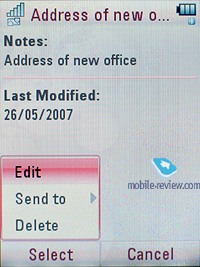
Calculator is quite basic and works just fine.
World clock function is implemented in a very fetching fashion – apart from the map which is a must-have for any application of this kind, you can compare current time in up to three cities.
MOTOSYNC. This is so-called Exchange ActiveSync which allows for distant data synchronization for organizer, phonebook and also mail program. There are also SyncML settings, it doesn’t take long to master them.
File manager. The file system of the platform is closed, thus you will have to deal with the default layout. Specifically, My files folder contains Pictures, Videos, Voice Note, Application Downloads, My Blog, Music and Sounds, Unrecognizable Files (in this folder there are all files which were not recognized by the handset, but can be beamed anywhere), My Documents and Contact Images (caller IDs).
In My Documents, there are some folders available, as well as links to web pages and messages of IM-manager.
Any folder can be viewed as a list, detailed list, or thumbnails. Stand-alone files (or you can pick the ones you need) can be copied to memory card, copying folders (function SendTo) is also supported. Lists can be sorted by name, date and size.
Another thing of note is that txt-files have their own icon, and on top of that, while in list-with-preview mode, you are presented with the first line of a file.
The file manager found in the platform aims to appeal to unsophisticated users. The gist that it builds on is very simple: limit the user by minimizing the number of enabled interactions with user-data. One of its biggest attractions is stable and reliable operation.
Download manager. It is a very pleasant application which is integrated with the browser and allows file downloading in the delayed mode. To put it in plain English, when clicking on a link, it gets transferred to this application and put onto the list of downloads. It is possible to minimize the current downloads. Then you can look through the list and the result of download or activate downloading if the file was not received. On the second tab, you will see files transferred via Bluetooth. You can execute/open any file from any list. The simplicity of the application is its advantage, when you feel the need in the large amount of downloads this app becomes a must-have.
Alarm clock. You can set up any number of alarms, for any of them it is possible to set a personal tune (by default taken from the profile) and repeat mode (Monday ~ Friday, weekends, daily). The general option for all alarms is Snooze Time, specified in minutes, by default its value is 5 minutes.

Back to the table of contents >>>
Music player
The player application comprises the following options: Playlists, Recently Played, Albums, Artists, Genres and Composers. You can choose any of them, depending on what you need. Basically these are sort of filters for files stored on your phone. Want to listen to some hip-hop? Then go to Genres section, and so on. Information is retrieved from ID 3 tags of mp3 files
The platform provides you with an absolute freedom of actions as far as playlist creation is concerned, you can choose several songs, or only a particular track during the playback. There aren't any limits to adding files onto the list. Playlists can be copied, renamed and saved again. You can choose certain songs from one playlist and copy it to another. All lists can be sorted according to your taste. The phone supports such modes as shuffle, intro (5 seconds from the beginning of each song).
There's only Spatial Audio option available in the menu (virtualization of sound source, there aren't any counterparts of this in mobile phones or mp3 players, this feature is very unique). A very basic and poor analogue of Spatial Audio is Stereo Widening technology used in Nokia and Sony Ericsson-branded products. Since we believe in the justice for all, it will be fair to say that Spatial Audio was first introduced in Motorola E1000, but that model didn't become a big hit among the consumers, which didn’t make for the popularity of this technology either.
Spatial Audio technology makes the sound volumetric; it actually gives every song a sort of depth, which was unheard of before. Unfortunately it's still not perfect, you will notice slight defects when this feature is turned full blast (listening to music at maximum level (7) was impossible for my ears even in noisy locations). You can try experimenting with the settings of Spatial Audio (7 bars) in order to find the best option for you. Using Spatial Audio for Soul and Reggae is a must, the sound becomes really juicy and clean. This is also a way to raise the volume of output signal, it becomes noticeably louder.
Bass Boost is here to stay for all those who love this function, once again there are 7 grades for setting up, switching between them will present you with notable changes in sounding.
Handling the player is very easy, you can skip tracks by pressing the navigation pad, engage rewind and fast forward by pushing it left or right. Pressing the navigational pad up or down will start or end playback. Side-keys are used for the same purposes. The rewind is progressive. There is also support for Album Art – in playback mode it is displayed as a tiny thumbnail, yet you can enjoy its full-screen version as well.
When the player is minimized, you can work with the rest of the phone's features and functions, meanwhile when the display is in standby mode you will see track title and its current position in the playlist on-screen. In order to maximize the player – just press joystick upwards. The phone supports A2DP profile, which allows sending sound to any stereo Bluetooth-headset. No problems were spotted with doing that, everything worked nicely. The player can be easily managed via the headset as well.
The platofrm has a multimedia search option, which can be used for music files too. The phone looks for song titles, allows detailing search by genre. As for photos, it's easier here, you search only for filename.
The player supports following music formats:
- RA v10
- AMR NB
- XMF
- AMR WB
- AAC
- WMA v9, v10, v11
- AAC+ Enhanced
- AAC+
- MP3
Back to the table of contents >>>
Voice Recorder
The Voice Recorder works in both stand by and talk modes. You can choose the default file name and memory type, in which the file will be saved. The length of the record is not limited by anything but the free space on memory card. Recorded voice memos can be used as ring tones as well.
Back to the table of contents >>>
Browser
Opera 8.5 is the default browser for the MOTOMAGX, sporting cookie support, ability to fit viewed pages into the screen (and also full-screen mode), font settings, dynamic scaling, Javascript and loads of other options to choose from or adjust. The browser handles Russian encodings with ease – if we are to face off Opera 8.5 against other company’s offerings, then it will turn out that the platform is the true powerhouse in this respect. Basically, it is one of the market’s best browsers, partly yielding only to Nokia Web Browser (OSS Browser version 2).
Back to the table of contents >>>
Settings
There are 8 default profiles, and the user can customize them as well as create his/her own. There are a lot of profile settings to choose from, we will list only the main ones: ring type (ring tone only, ring tone and silent alert, silent alert followed by ring tone). Volume can be adjusted for ring tones, service tones and mp3 player. Alerts can be set up for all standard applications: contacts, events, organizer, email, IM, alarm clock. Finally, the phone has offline mode during which the network part of the phone will be disabled, meanwhile other features will remain available.
Themes – there's a certain difference from the triplets, the main menu icons don’t change as you switch between themes, but you can do it on your own. Instead of that, themes can change window appearance and color schemes.
Data connections. Here you can use either wap-protocol or internet APN. The settings are quite simple, there's nothing complicated in them.
Phone settings – the categories in this menu are uncomplicated and thus easy to understand. In phone settings, you can alter display parameters, time and date, language, input language, see battery's level in % (more detailed way than simple battery icon) and switch on energy saving mode. The phone supports firmware updates over the air, there's a corresponding option in the menu list. Some interesting settings: it is possible to disable voice dialing when pressing button on the headset, disable or enable automatic answering.
Security – the phone has standard phone lock, it can be used only when the phone gets turned on or at any moment you like. It is also possible to set password on Messages, Calendar and Contacts menus, so that without entering the password these applications will simply refuse to launch.
Back to the table of contents >>>
Call logs and other calling features
There are three lists with 20 entries in each available. Same numbers don’t get merged, they remain separate entries. The phone displays first name and last name of the contact together with the number type icon. In the general list (fourth on the list), you will see 20 last entries from three other lists. You will see what kind of call it was with the help of thumbnails. In case you are interested in details, you can check the date and time of the call, as well as its length. You can switch between the lists by pressing * or #.
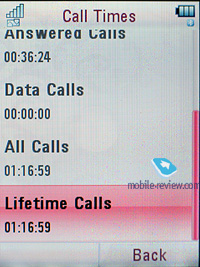
On an incoming call, the photo takes up quite a big part of the display, contact's name or his/her phone number are displayed too. When a message is received, you will see the sender's phone number in case it's not present in the contact book. You can activate Sound Recorder by flicking on side-key during a call, you can also send sound to Bluetooth headset and make other standard actions. During the call, there's a timer ticking, so that at the end of the call you will be shown its duration.
Frequently used numbers are displayed not only in the phonebook, but when creating new messages and email too. This is extremely convenient and allows saving some time.
Back to the table of contents >>>
Java
Heap size for applications is 2 Mb, there's no limitation for JAR-file size. You can install java applications via wap or directly from other devices. The applications can be stored on the memory card or in the handset’s memory – it makes no difference. The applications can work in the minimized mode, this means that JIMM (ICQ client) can be used with a greater deal of comfort. It is possible to setup custom security settings for each application. Unfortunately, you cannot override annoying security issues (except for the applications with available security certificate), which are pretty much similar to the ones in Sony Ericsson's devices. However, the platofrm doesn’t present you with the ability to run two applications simultaneously – you can either minimize or close an application.
Back to the table of contents >>>
Version L6.3
The first handset to sport the L6.3 onboard is the Motorola MOTO U9, coming in with a couple of changes, some of which are quite important and others are mere face-lifts. Below is a complete change log for this version:
- New menu view – Spinner (one icon at a time with the icon bar at the foot of the screen).
- Fast phone number search – while at the standby screen all you need to do is enter first digits of a number to make the handset offer you all matches it found in a list.
- Updated phonebook - now the user has the option of saving contacts right into the handset's memory or SIM-card. Should a contact comprise several phone numbers, the system splits it into different entries. Also the platform now packs an utility for handling contacts stored on the SIM-card.
- Updated SyncML client, now comes with tips.
- Email wizard – you just submit your username and password, while the application will try to do the rest and setup your mail account. However it does the trick only for non-enterprise, free mail services, like GMail.
- New utility for viewing images in the file manager, allowing you to rotate it clockwise or counterclockwise.
- Equalizers for the music player.
- Outer display settings and wallpapers.
- Symphony browser – unlike the previous models, this version of the platform packs an open source browser (Symphony 1.1.0) rather than Opera 8.5.
The L6.3 browser’s feature pack is pretty much comparable with Opera 8.5 that comes preinstalled in other models. It supports page scaling, font adjustment, as well as the Fit Screen mode, when the handset crops a web-page so that it would fit the display. The browser also enables you to work with several windows at a time, boasts folder trees for bookmarks and a pop-up window killer.
Back to the table of contents >>>
Conclusion
Comparing the MOTOMAGX with today's platforms for mobile phones like the Sony Ericsson A200 or the Nokia S40 5th edition, the Motorola’s solution shows off a few amenities that vastly increase its usability. At the same time, it is by no means miles ahead of the competition, as among its weaknesses are poor themes, interface customization, absence of multitasking functionality (whereas the A200 has it). By and large, the LJ is one of the major players in the world of mobile phones, if you take Symbian and the S60 out of the equation. This solution is an obvious winner with its openness to developers and ubiquitous custom applications that allow change the functionality of these handsets, or, if you like, smartphones, in a big way.
Motorola is quite ambitious when it comes to the MOTOMAGX – it is striving to bring about a Symbian-grade platform both expandability- and core functionality-wise. This trick will never work for the S40, for instance, since it will always have to take a back seat as long as the S60 is out there. At the same time, Sony Ericsson is exercising pretty much the same line for its platform, although with a number of reservations.
Related links:
Back to the table of contents >>>
Eldar Murtazin (eldar@mobile-review.com)
Translated by Oleg Kononosov (oleg.kononosov@mobile-review.com)
Published — 10 January 2008
Have something to add?! Write us... eldar@mobile-review.com
|
News:
[ 31-07 16:21 ]Sir Jony Ive: Apple Isn't In It For The Money
[ 31-07 13:34 ]Video: Nokia Designer Interviews
[ 31-07 13:10 ]RIM To Layoff 3,000 More Employees
[ 30-07 20:59 ]Video: iPhone 5 Housing Shown Off
[ 30-07 19:12 ]Android Fortunes Decline In U.S.
[ 25-07 16:18 ]Why Apple Is Suing Samsung?
[ 25-07 15:53 ]A Few Choice Quotes About Apple ... By Samsung
[ 23-07 20:25 ]Russian iOS Hacker Calls It A Day
[ 23-07 17:40 ]Video: It's Still Not Out, But Galaxy Note 10.1 Gets An Ad
[ 19-07 19:10 ]Another Loss For Nokia: $1 Billion Down In Q2
[ 19-07 17:22 ]British Judge Orders Apple To Run Ads Saying Samsung Did Not Copy Them
[ 19-07 16:57 ]iPhone 5 To Feature Nano-SIM Cards
[ 18-07 14:20 ]What The iPad Could Have Looked Like ...
[ 18-07 13:25 ]App Store Hack Is Still Going Strong Despite Apple's Best Efforts
[ 13-07 12:34 ]Infographic: The (Hypothetical) Sale Of RIM
[ 13-07 11:10 ]Video: iPhone Hacker Makes In-App Purchases Free
[ 12-07 19:50 ]iPhone 5 Images Leak Again
[ 12-07 17:51 ]Android Takes 50%+ Of U.S. And Europe
[ 11-07 16:02 ]Apple Involved In 60% Of Patent Suits
[ 11-07 13:14 ]Video: Kindle Fire Gets A Jelly Bean
Subscribe
|
